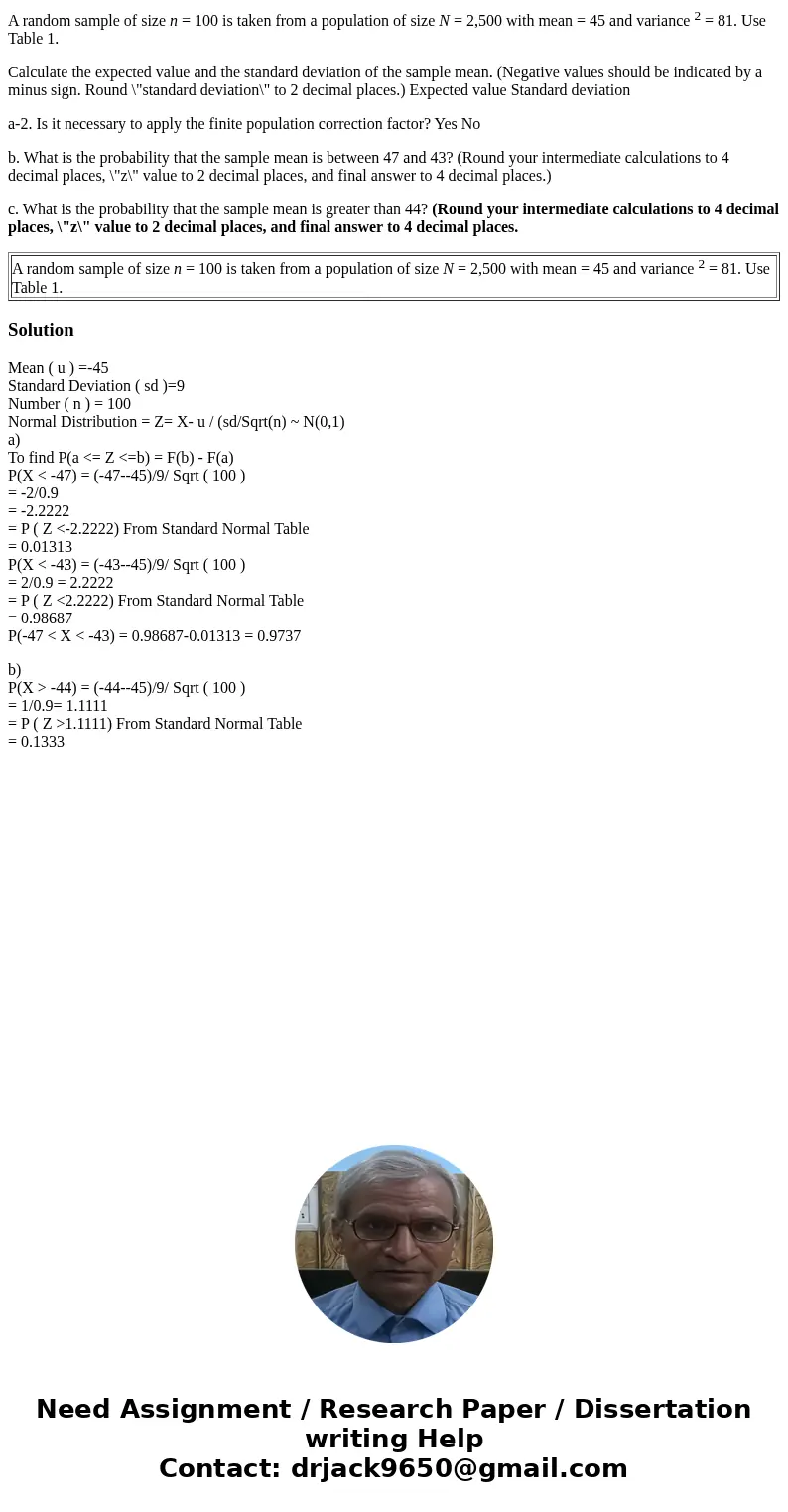A random sample of size n 100 is taken from a population of
A random sample of size n = 100 is taken from a population of size N = 2,500 with mean = 45 and variance 2 = 81. Use Table 1.
Calculate the expected value and the standard deviation of the sample mean. (Negative values should be indicated by a minus sign. Round \"standard deviation\" to 2 decimal places.) Expected value Standard deviation
a-2. Is it necessary to apply the finite population correction factor? Yes No
b. What is the probability that the sample mean is between 47 and 43? (Round your intermediate calculations to 4 decimal places, \"z\" value to 2 decimal places, and final answer to 4 decimal places.)
c. What is the probability that the sample mean is greater than 44? (Round your intermediate calculations to 4 decimal places, \"z\" value to 2 decimal places, and final answer to 4 decimal places.
| A random sample of size n = 100 is taken from a population of size N = 2,500 with mean = 45 and variance 2 = 81. Use Table 1. |
Solution
Mean ( u ) =-45
Standard Deviation ( sd )=9
Number ( n ) = 100
Normal Distribution = Z= X- u / (sd/Sqrt(n) ~ N(0,1)
a)
To find P(a <= Z <=b) = F(b) - F(a)
P(X < -47) = (-47--45)/9/ Sqrt ( 100 )
= -2/0.9
= -2.2222
= P ( Z <-2.2222) From Standard Normal Table
= 0.01313
P(X < -43) = (-43--45)/9/ Sqrt ( 100 )
= 2/0.9 = 2.2222
= P ( Z <2.2222) From Standard Normal Table
= 0.98687
P(-47 < X < -43) = 0.98687-0.01313 = 0.9737
b)
P(X > -44) = (-44--45)/9/ Sqrt ( 100 )
= 1/0.9= 1.1111
= P ( Z >1.1111) From Standard Normal Table
= 0.1333

 Homework Sourse
Homework Sourse